

Debbie met Gene in college and was drawn to his “good character.”
They married in 1969.
Initially, the couple had good jobs, and friends with whom they frequently socialized. But six or seven years into the marriage, things began to unravel. Gene became depressed, then manic, then depressed, again. He also began hoarding things: digging through neighbors’ trash cans, walking the railroad tracks near their house to scout for abandoned items, and going on shopping sprees.
“He had to take advantage of a sale because he always thought about how much he was saving, not if we needed it or wanted it,” Debbie says.
Eventually, a psychologist diagnosed Gene with bipolar disorder, obsessive compulsive disorder, and hoarding disorder. The latter affects two to five percent of the population.
Hoarding disorder is characterized by the acquisition and failure to discard of a large number of items that appear useless or have limited value. The items are cluttered and render spaces unusable. And the behavior causes the person who hoards distress and impairment.
Percent of
the U.S.
population
that has
hoarding
disorder
Hoarding disorder is characterized by the acquisition and failure to discard of a large number of items that appear useless or have limited value. The items are cluttered and render spaces unusable. And the behavior causes the person who hoards distress and impairment.
People who hoard are different from collectors. The latter look for specific items (e.g., model cars, stamps) and take pride in organizing and displaying them. People who hoard save random items and store them haphazardly.
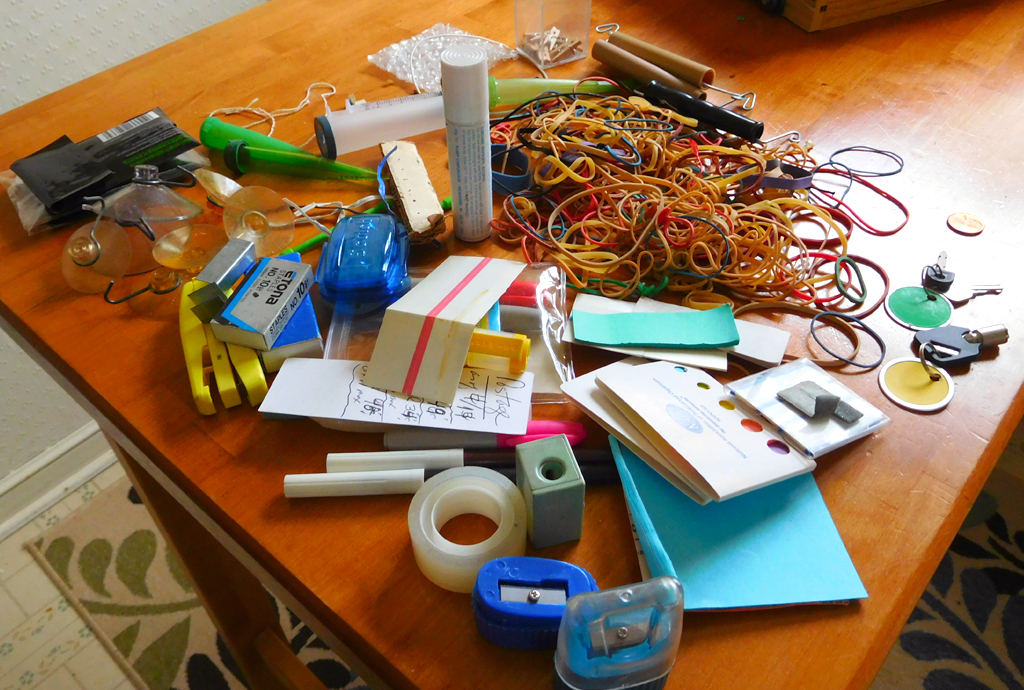
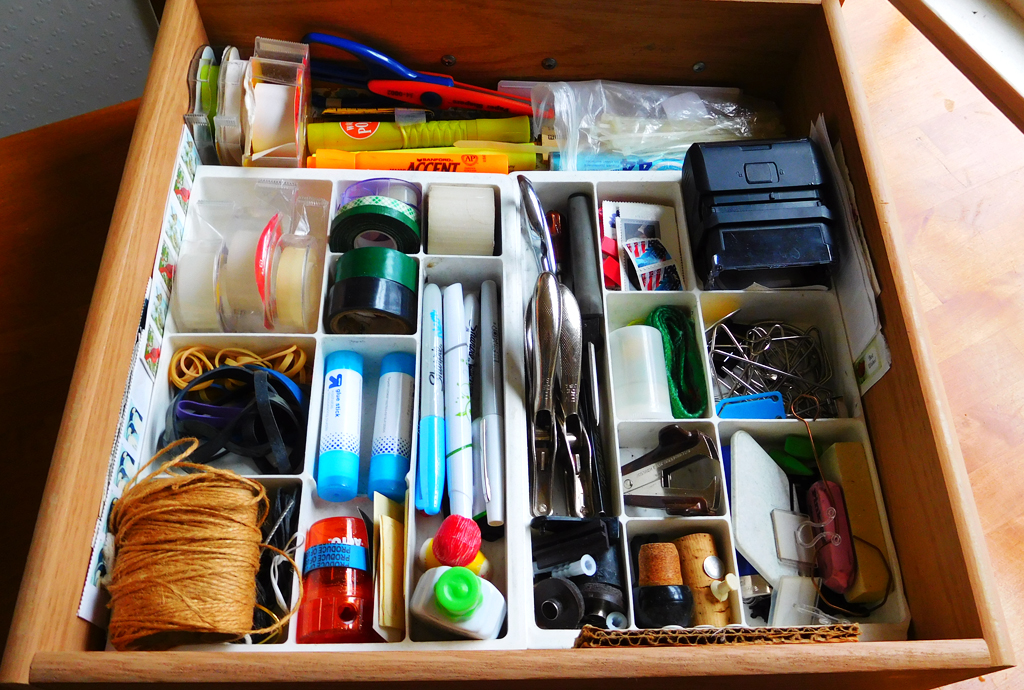
Hoarding disorder can by symptomatic of a larger health problem. Emotional trauma (e.g., the loss of a loved one), traumatic brain injury, attention deficit disorder, major depression, bipolar disorder, obsessive compulsive disorder, and chronic pain are all issues that may prevent people from getting organized and lead to excessive clutter.
Whether connected to a larger health problem or not, however, hoarding disorder is its own distinct mental health issue, as defined by The American Psychiatric Association’s Diagnostic and Statistical Manual of Mental Disorders (DSM).
The common treatments are psychotherapy and medications like selective serotonin reuptake inhibitors (SSRIs).
Imagine 30 people that you know. Chances are that one of them has hoarding disorder.
A few months into Gene’s mental health crisis, Debbie consulted a psychologist after her husband drained their savings on Christmas lights.
“Can’t you stand to see him happy?" the psychologist replied.
Afterward, “I felt like the worst wife in the world,” Debbie says. From then on, she felt like a “nag” whenever she asked Gene to clean his mess. And for five years, she was too ashamed to consult another mental health provider.
In the meantime, Gene’s hoarding intensified.
“He packed every surface with stuff …” Debbie says. “He had 15 to 20 of the same shirt because he ‘needed it.’”
The couple stopped using their garage because they couldn’t fit the car inside. Debbie fell three times in the basement, trying to navigate to the laundry room. One day, in the living room, she realized she couldn’t see the TV.
Because she was too embarrassed to have friends over, Debbie stopped entertaining, and their “culture of friends fell away.”
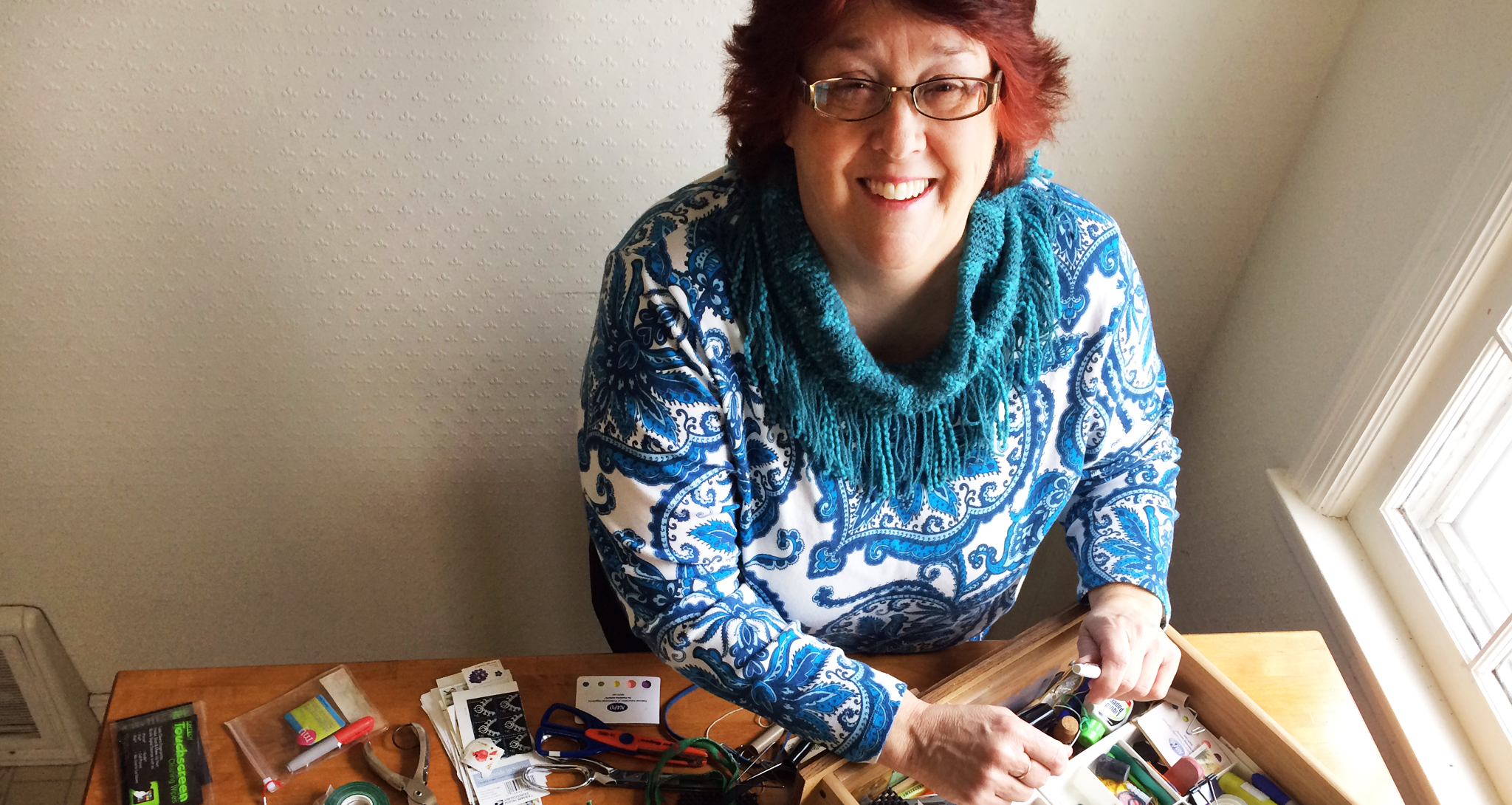
Louise Kurzeka is president of the Minnesota chapter of the National Association of Professional Organizers (NAPO). She co-founded the chapter in 1994.
NAPO is a professional association for organizing and productivity consultants, speakers, trainers, authors, and manufacturers of organizing products – and members receive education about hoarding disorder.
That wasn’t always the case.
“Organizing was a very new profession [in 1994] …” Kurzeka explains. And in the 1990s and early 2000s, “Hoarding wasn’t being talked about … There was not a lot of research out there.”
However, NAPO organizers started to get more frequent calls from people who had loved ones with hoarding behavior – and visiting clients’ homes that fell outside the realms of a normal mess. (Kurzeka also credits shows like A&E’s Hoarders for helping people to talk more openly about the issue.)
The organizers’ experiences prompted them to look for ways to be educated about hoarding disorder. This led to the birth of the Institute for Challenging Disorganization (ICD). ICD became one of the only organizations in the country to offer classes about hoarding disorder.
Through her study with ICD, Kurzeka learned, “That anything – absolutely anything – can have meaning in the life of a hoarder. The things you think of as garbage are not necessarily garbage [to them] – a piece of yarn, a label from a soup can, a gum wrapper.”
In the later ‘90s, ICD created a reference guide about hoarding that designates spaces as Level I to Level 5 on a Clutter-Hoarding Scale (CHS). The guide was revamped in 2011.
Kurzeka says the levels “provides an opportunity for common language between collaborators in hoarding situations,” like professional organizers, mental health providers, and fire, law enforcement, and EMS professionals.
The levels break down what a person can expect to experience in a home in terms of structure and zoning, animals and pests, household functions, and health and safety. The guide also identify the kind of personal protective equipment (e.g., respirator masks, safety goggles, work gloves) professionals should wear at each level.
Level IV and V homes pose a threat to public health, and it’s at this point that local government may intervene.
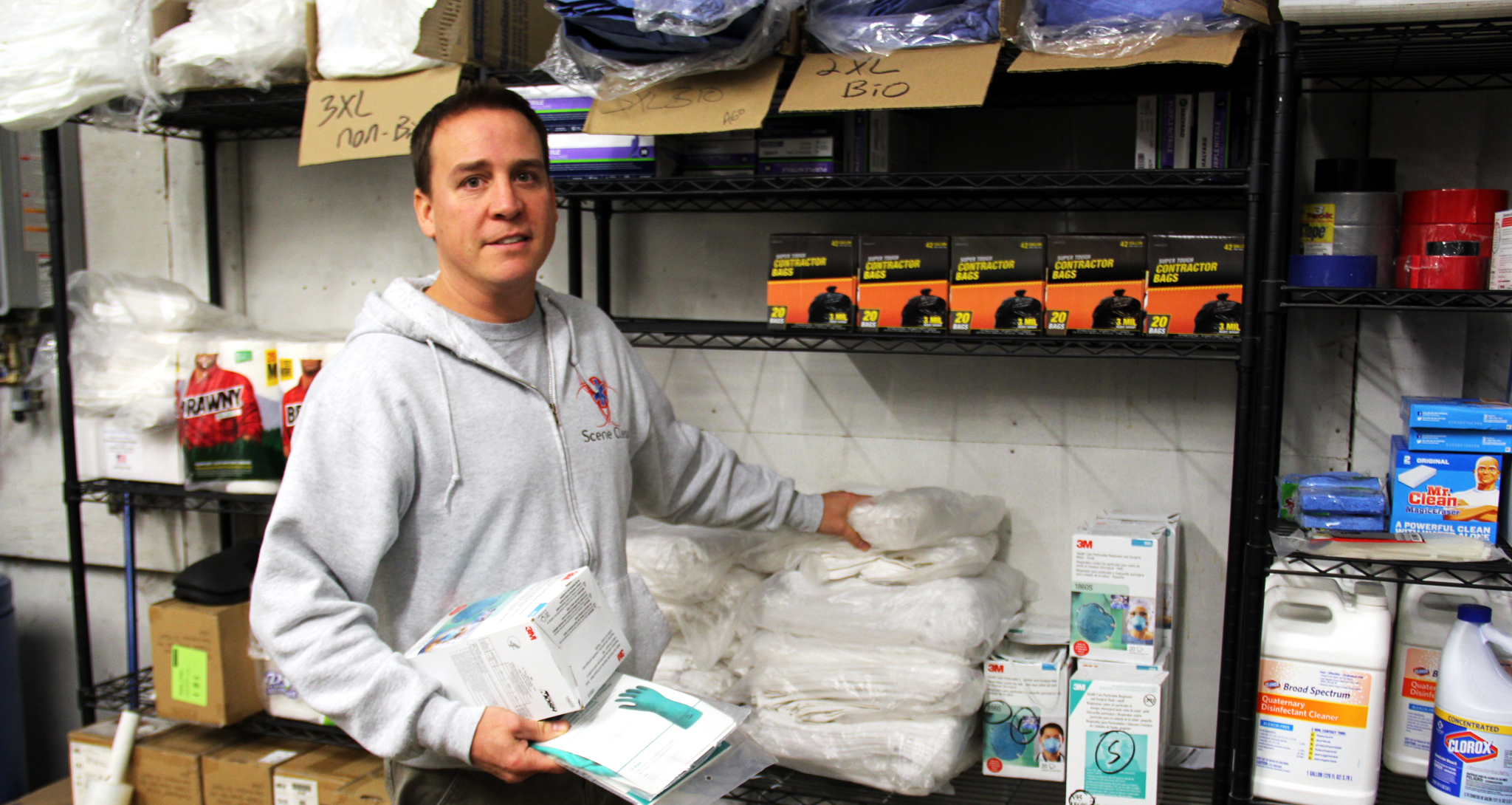
Number of
homes in
Hennepin
County
that undergo
a forced
cleaning
each year
because
they pose
a public
health
concern
Randy Carey is CEO and co-founder of Twin Cities-based Scene Clean, Inc. Because Scene Clean originated as a blood/trauma cleanup company, employees are used to wearing the personal protective equipment that’s required in a Level IV or V hoarding space.
For the past few years, Scene Clean has contracted with Minnesota cities and counties to clean up homes that are so cluttered they pose a public health threat – whether through mold, mildew, feces, rotten food, animals, an abundance of prescription drugs, or other hazards.
Carey said that the first part of the cleanup process is usually just removing items from inside a home. In a Level IV or V house, most of these items are destroyed by mildew, mold, and mice, and are not salvageable. Then they decontaminate.
Some Level IV or V homes have taken a team of six Scene Clean staff one week to clean.
At one home, they filled seven 30-yard dumpsters with debris (almost 7,000 square feet).
Carey says that Scene Clean trains its employees how to act and speak around a client with a hoarding disorder. “Everyone understands that there’s an underlying mental health disorder …” Carey says. “These people are not just sloppy or lazy ... there’s a problem here that people can receive some treatment for … [our staff’s] training requires them to be sensitive of that.”
For Carey, one experience that underscored the mental health component of hoarding was the forced cleaning of the house of a client who lived in the suburbs.
“We noticed, like, even on the refrigerators, that the calendars were set back about a year … and they hadn’t moved … and that was obviously some type of a trauma,” says Carey. “And when we looked back, there was a child and a spouse who had passed in the same area of time.”
Carey says that, initially, the forced cleaning “was very stressful” for his client. But he’s never forgotten how much the client’s expressions and appearance improved as Scene Clean restored the home to a more livable state.
Randy Carey, owner and co-founder of Scene Clean, Inc., on a client whose home underwent a forced cleaningWe noticed, like, even on the refrigerators, that the calendars were set back about a year … and they hadn’t moved … and that was obviously some type of a trauma. And when we looked back, there was a child and a spouse who had passed in the same area of time.
Over the years, Debbie and Gene’s home oscillated between a Level I and a Level IV space. ICD’s reference guide characterizes the latter as having “excessive outdoor clutter of items normally stored indoors,” and “several rooms cluttered to the extent that they cannot be used for intended purposes.”
Once, when their home was on the higher side of ICD’s Clutter-Hoarding Scale, the couple rented a 20’ X 6’ X 6’ dumpster. They filled it up with trash – 2 ½ times.
But, after every cleaning, it never took long for the mess to accumulate again.
That’s why Debbie was “delighted” whenever neighbors reported them to the city.
Looking back, “I just felt stuck,” Debbie says. “And I thought this was a sad way to live. And at the same time I’d said, ‘In sickness and in health’ in the wedding vow, and so what was I going to do?”
Debbie, the wife of a man with hoarding disorderI think the most important thing is to realize that they, [the people who hoard], think its fine. They don’t see a problem. They don’t understand that it is a problem … Nagging doesn’t help.
Over the years, Louise Kurzeka has become increasingly skilled at working with clients with hoarding disorder.
“Trust is … the foundation for being successful …” she says.
In addition to being truthful, Kurzeka says it’s important that professional organizers and others give people with hoarding disorder a say in the cleanup process (unless their mess poses a public health threat).
“You cannot force someone [to throw something away],” she explains. “If you make the decision for them and they find out that you did take something and discard it without their permission or without their very clear direction … you’ve compromised your trust.”
Kurzeka also stresses that any efforts to clean or organize a home can only be sustained if the individual receives ongoing mental health support.
“What we know from research is if we just get rid of everything [in a home] … the process itself will increase their desire for acquisition and hoarding,” she says. “Within 3-6 months, [without mental health support], they’ll duplicate the hoarding.”
Louise Kurzeka, co-founder and president of the Minnesota chapter of the National Association of Professional OrganizersWhat we know from research is if we just get rid of everything [in a home] … the process itself will increase their desire for acquisition and hoarding,” she says. “Within 3-6 months, [without mental health support], they’ll duplicate the hoarding.
In 2010, Gene tried to end his life.
When the paramedics arrived, he was taken to Hennepin County Medical Center and remained in a coma for two weeks until he passed away.
He was 67 years old.
“What is so sad is he was a good man,” Debbie says. “I married a man of good character. And we were in love and we were happy, we were actually very happy, until we were gradually not ...”
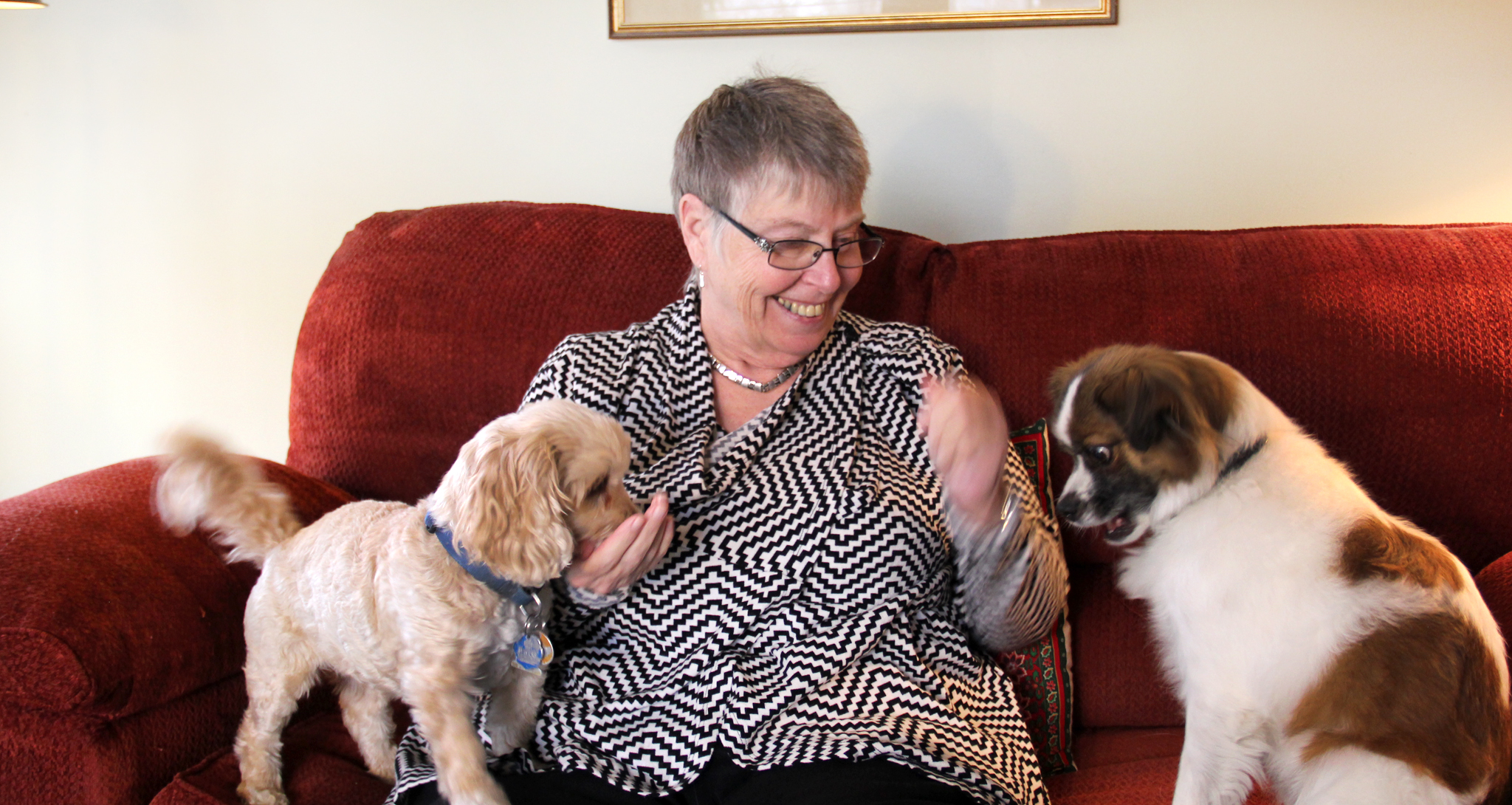
After Gene died, Debbie hired Louise Kurzeka to organize her house.
“When [Kurzeka] was here [the first time] she asked a couple of questions: ‘Would you like us to put the books here?’ Would you like us to do this or something?’” Debbie recalls. “I said, ‘I have to go upstairs.’ And I got under my quilt in the bed and I covered my head.”
She laughs at the memory, then turns serious. “I was so overwhelmed … That was just a fearful time … But then, you know, a year later I seemed to be doing well. And it’s been, since it happened, probably six or seven years.”
Today Debbie lives with her two dogs in the same house she bought with Gene. She spends time with friends and family and says she enjoys retirement.
“[Gene] was a wonderful, generous guy,” Debbie says of her late husband. “Just a lovely person … I’m so sorry he was sick.”
Written by: Lori Imsdahl